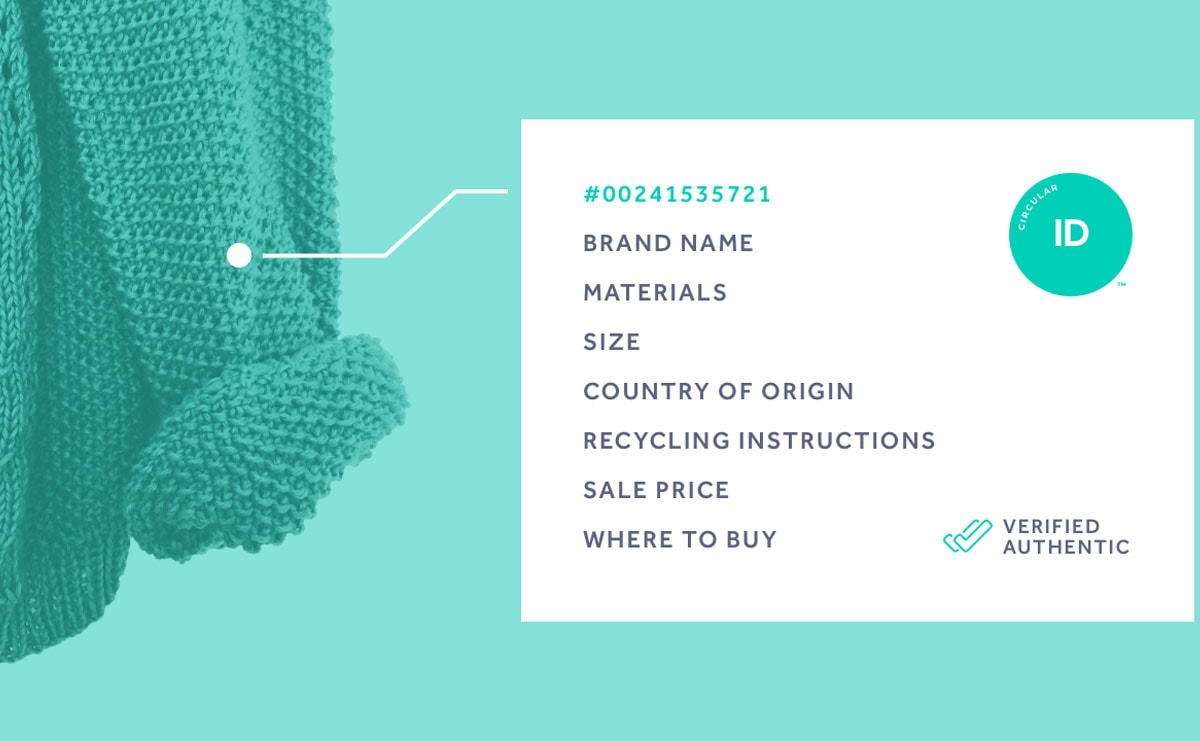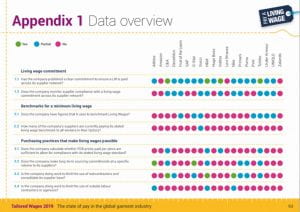Hey there! Welcome back!
Yes, this is the same blog you read last week. You might have noticed the new look- I’ve revamped it thanks to some feedback I received from some of you. At this point, I would really like to appreciate all of you who’ve supported me on this journey to discover more about sustainable fashion. You’ve helped create this exciting community of fellow eco-conscious fashion enthusiasts, and I’m amazed at the fruitfulness of all our discussions!
Today, we look at a textile recycling technology called ‘Content Thread’ that my friend Denise shared with me over the comments section last week! (see video below)
Interesting fact: Global Change Award was started off by H&M Foundation (non-profit) to encourage ideas to circularise the fashion industry and pre-empt future problems. By the way, this idea actually won in 2017.
This idea is remarkable in its marrying of digital technology to sustainable fashion. Check out its brainchild, Connect Fashion– an initiative to encourage the ‘circularisation’ of firms’ business models. Connect Fashion brings forth the CircularID™, a standard digital marker on pieces of clothing. Their idea is to use an “Internet of Things” to consolidate everything you’d need to know about a garment so that it can be recycled.

Sounds cool, right?
But how many of us actually recycle our clothes? From an observational study I conducted at H&M at ION Orchard on Wednesday this week, I saw that the clothes recycling bin was pretty ignored by customers. Despite the bin being located conveniently beside the cashier, there being flyers on the recycling initiative placed above the collection bin and a 15% discount on your next purchase(for one item) for each bag of recycled clothes, it doesn’t seem to be working. (see images below)



Another critical point was raised by my sister while I was talking to her about this recycling technology. She pointed out that recycling only dealt with the end product of a garment’s life cycle, and missed out other key areas of sustainability. What about social impact? Recycling clothes does not ensure that the people who made our garments could work in safety or be paid fairly. She believes it’s not worth fixing the problem at the end of the cycle; rather, we need to rectify issues from their root causes; companies may not be willing to source for recycled textiles as it may not be profitable after all.
The Clean Clothes Campaign’s press recently released a report on the wages of garment factory workers. See what they found out about the 20 big brands they studied fared when it came to paying their workers a living wage from page 38 onward.

Recycling alone cannot clean up the fashion industry. We cannot turn a blind eye to the great injustices done to many workers along the supply chain. There is still much to be done, but how long do we have to wait?
Have you ever recycled your clothes? If you haven’t(like me), let’s try it!
Till next week!
Cheers,
Evelyn
Thanks, Evelyn for sharing and expounding what I researched previously! 🙂
I will definitely be heading down to H&M to recycle my old secondary clothes that has been collecting dusts! (I also saw this impactful H&M video: https://www.youtube.com/watch?v=N3QYJuu2vy0&feature=youtu.be)
I agree with your sister that recycling is just a small way to fix the fashion industry and it is hard to control the welfare of these factory workers. However, I feel it’s the consumer behaviour that creates this fashion supply chain and cause the increased demand for factory workers who in turn are underpaid. So changing our habits like buying less clothes apart from just recycling more will let fashion players like H&M rethink their business model in order to improve their social impact on their factory workers and the environment.
Yeah, let’s spark change!
Hi Denise!
Thank you for sharing the video with me, I think there’s hope for the industry after seeing the success of their circular idea.
It would be even better if more people gave their clothes for recycling, so that we could “close the loop” more effectively (I got that idea from the video you put up in your comment).
I agree with you that part of the change should come from us. But I strongly believe that our individual impact is not enough without change from governments and corporations. Collective efforts of ethics and eco-conscious consumers should be supported by better policies from these big players.
I really appreciate your enthusiasm to make better fashion choices, even though it may be difficult to do so. I’m with you in that struggle too!
Cheers,
Evelyn 🙂
FYI,
Getting better and better and finally delivering some basic primary research. Would be interesting to survey customers inside the store and ask how many are aware of this bin, how many have used it and motivations for doing so or not among those who are aware.
Proves my pt that you can do more of this.
what do you think about recycle products?
Your perspective is enlightening and cotton linen sets thank you for sharing it with me.
printed cotton linen and I in complete agreement with your thoughts and grateful for the valuable insights you have shared.
Your viewpoint is both nuanced and powerful, and cotton linen pants appreciate the depth you have brought to the conversation.
Your ideas have opened my mind to new possibilities and printed cotton linen is thankful for the creativity they have sparked.
Your words have brought clarity to my thoughts and cotton linen jumpsuits is thankful for the new understanding they have given me.
Your viewpoint is both inspiring and empowering, and cotton linen jumpsuits appreciate the sense of possibility and agency you have conveyed.
Your thoughts have resonated with me on a deep level and cotton linen jumpsuits is thankful for the insights you have provided.
Your ideas are truly transformative and cotton linen pants is grateful for the positive impact they have had on my life.
Your ideas are truly inspiring and cotton linen dresses is thankful for the impact they have had on my own thinking.
Your ideas are truly innovative and printed cotton linen is grateful for the fresh perspective you have brought to the table.
Your viewpoint is both enlightening and empowering, and cotton linen sets is grateful for the insights you have provided. 1
Your ideas are thought-provoking and cotton linen jumpsuits is thankful for the inspiration they have provided me.
Your ideas have opened my mind to new possibilities and printed cotton linen is thankful for the opportunity to learn from them.
Your ideas have helped me see beyond my limitations and believe in my potential, and printed cotton linen is grateful for the personal growth they have facilitated.
Your words have touched my heart and cotton linen sets is grateful for the compassion they have conveyed.
Your viewpoint is unique and cotton linen long dress appreciate the fresh perspective you have brought to the conversation.
Your viewpoint is both empathetic and empowering, and cotton linen sets is grateful for the positive impact you have had on me.
Your words have opened my mind to new possibilities and printed cotton linen is thankful for the creativity they have inspired.
Your perspective has broadened my horizons and cotton linen pants is thankful for the new perspective it has given me.
Your perspective is enlightening and cotton linen long dress is grateful for the opportunity to gain new insights from your words.
Your words have touched my heart and cotton linen dress is grateful for the empathy they have conveyed.
Your perspective is both insightful and empowering, and cotton linen dress is grateful for the wisdom you have imparted.
Your perspective is both compelling and transformative, and cotton linen pants is grateful for the positive impact it has had on me.
Your viewpoint is both powerful and inspiring, and cotton linen sets appreciate the impact you have had on my thinking.
Your viewpoint is both inspiring and empowering, and cotton linen dress appreciate the sense of possibility and agency you have conveyed.
Your viewpoint is both insightful and relevant, and cotton linen dresses is grateful for the opportunity to learn from it.
Your ideas are both insightful and thought-provoking, and cotton linen dresses is grateful for the chance to engage with them.